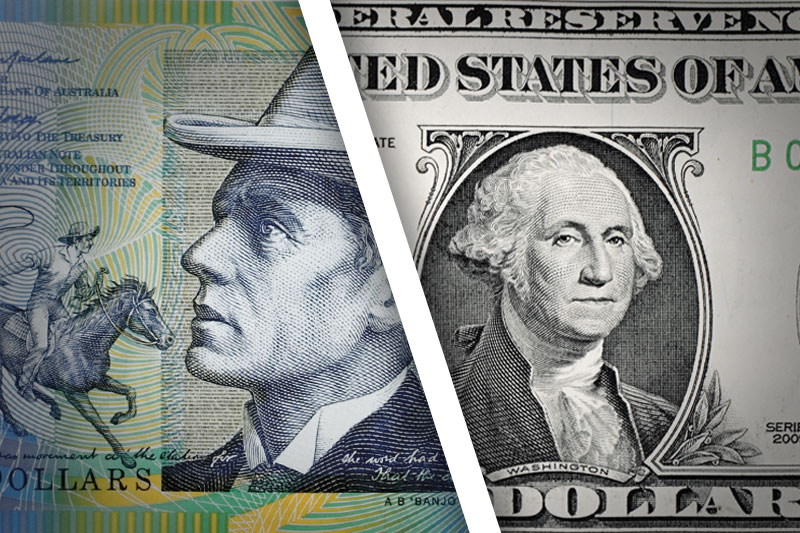Investing.com - The Australian dollar was higher against its U.S. counterpart on Monday, after the release of upbeat retail sales out of Australia, although expectations for the Federal Reserve to soon begin tapering its stimulus program supported the greenback.
AUD/USD hit 0.9501 during late Asian trade, the pair's highest since October 31; the pair subsequently consolidated at 0.9499, gaining 0.67%.
The pair was likely to find support at 0.9422, the low of November 1 and resistance at 0.9623, the high of October 28.
Official data earlier showed that retail sales in Australia 0.8% in September, beating expectations for a 0.4% increase, after an upwardly revised 0.5% rise the previous month.
A separate report showed that job advertizements in Australia fell 0.1% in October, following a 0.2% increase the previous month.
In addition, Australia's house price inflation rose 1.9% in the third quarter, confounding expectations for a 2.1% increase, after an upwardly revised 2.7% rise in the the three months to June.
Meanwhile, the greenback remained supported after unexpectedly strong U.S. manufacturing data on Friday added to expectations that the Federal Reserve could start to taper its stimulus program as soon as next month.
Federal Reserve Bank of Dallas President Richard Fisher said Monday that the recent fiscal standoff in Washington counteracted the role of the Fed’s easy money policies in the economic recovery. The comments came during a speech in Sydney.
The Aussie was higher against the euro with EUR/AUD retreating 0.64%, to hit 1.4207.
Later in the day, the U.S. was to release data on factory orders.
AUD/USD hit 0.9501 during late Asian trade, the pair's highest since October 31; the pair subsequently consolidated at 0.9499, gaining 0.67%.
The pair was likely to find support at 0.9422, the low of November 1 and resistance at 0.9623, the high of October 28.
Official data earlier showed that retail sales in Australia 0.8% in September, beating expectations for a 0.4% increase, after an upwardly revised 0.5% rise the previous month.
A separate report showed that job advertizements in Australia fell 0.1% in October, following a 0.2% increase the previous month.
In addition, Australia's house price inflation rose 1.9% in the third quarter, confounding expectations for a 2.1% increase, after an upwardly revised 2.7% rise in the the three months to June.
Meanwhile, the greenback remained supported after unexpectedly strong U.S. manufacturing data on Friday added to expectations that the Federal Reserve could start to taper its stimulus program as soon as next month.
Federal Reserve Bank of Dallas President Richard Fisher said Monday that the recent fiscal standoff in Washington counteracted the role of the Fed’s easy money policies in the economic recovery. The comments came during a speech in Sydney.
The Aussie was higher against the euro with EUR/AUD retreating 0.64%, to hit 1.4207.
Later in the day, the U.S. was to release data on factory orders.
